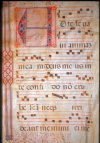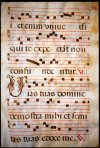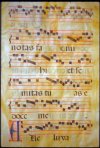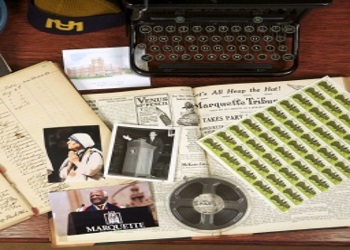Colonel Howard Greene Antiphonal Collection
 |
 A Milwaukee native, Howard Greene served with distinction in the 32nd Division during World War I. Later a resident of Delaware, Col. Greene studied and prepared glossaries for each of the antiphonals. |
|
These twelve antiphonals, or medieval choir books, were commissioned for use at the Monastery of the Order of San Jerónimo in Alcala la Real in the Archdiocese of Granada. The Gregorian chants were prepared on vellum in a fine strong style, and are replete with fine examples of Mudejar ornamentation. The chants were used by monks throughout the liturgical year. Measuring as large as 40” x 30”, each set of manuscripts remains bound in the original oak boards. |
|
|
Once believed to date from the late 13th century, recent research indicates that the manuscripts were actually completed in 1562. A century earlier, the introduction of the printing press had resulted in a rapid decline in handwritten texts. Spanish monasteries remained a bastion of older methods, however, where cloistered monks prepared handwritten antiphonals well into the 18th century. |
|
|
The manuscripts were rescued from a monastery in Burgos Las Hulegas in 1931, as mobs began destroying churches and convents in anti-religious rioting. Colonel Howard Greene secured the manuscripts and presented them to Marquette University in 1952. Marquette University Libraries and the Haggerty Art Museum co-curate the collection. |
Click once to see larger image. Click twice to reduce image.


















